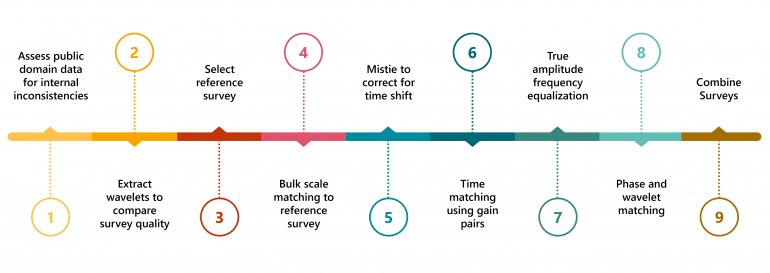Leverage our signature CCUS workflow to identify and evaluate carbon storage sites worldwide
03 August 2023The energy market is looking for fast and accurate technologies to identify suitable sites for carbon storage. To address this need, we have designed a signature CCUS workflow, in partnership with ESA, primed for seamless application in many strategic geological areas across the globe.
This innovative process is designed to identify and evaluate carbon storage prospects and has already proven its efficacy through the Gulf of Mexico CCUS Study. Read about the CCUS workflow application in this article.
Contact us to enquire.



Data Conditioning
Public domain datasets are the perfect candidate for identifying carbon storage potential. Obtaining legacy datasets presents a cost-effective and easily accessible alternative to acquiring new data, all while providing extensive geological coverage. These datasets are ideal for regional understanding and interpretation using machine learning algorithms. Nonetheless, these data sources may suffer from internal inconsistencies and imaging constraints. This is why our workflow begins with expert data conditioning of seismic, wells and other data types.

Machine Learning (ML)
Once the datasets have been corrected and merged, interpretation labels are created for semi-supervised learning. ML algorithms then propagate interpretation across volumes, reducing the time to site selection. Similar processes are also applicable to fault identification and interpretation as well as petrophysical log imputation. This powerful suite of tools reduces the time to decision making expediting the, often lengthy, interpretation process. Results are then QC’d by our team of regional experts to ensure interpretation meets expectations before the specific site selection process begins.
Contact us to enquire.